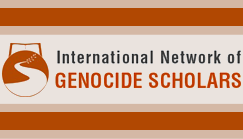Event Title
Hate Speech as Persecution: A Comparison to the Incitement to Commit Genocide - focusing on the case of Vojislav Šešelj
Submission Type
Paper
Abstract
In 2018, the MICT (United Nations International Residual Mechanism for Criminal Tribunals) found Seselj’s speech to be the equivalent of an actus reus of persecution, a crime against humanity. In this decision, the Appeal Chamber believed that the speech denigrated the Hrtkovci Croatians on the basis of their ethnicity, violating their right to respect for dignity as human beings. The Chamber required hate speech as persecution to consist of two elements: i) denigrating a target group based on ethnicity and ii) violating a human being’s right to respect for dignity.
This is a new development in relation to the ICTR’s Nahimana case, in which the court did not consider whether the violation of the right to respect for dignity is as serious as other crimes against humanity; whether ‘mere hate speech not inciting violence’ is the equivalent of other crimes was not examined in this case. However, the ICTR discerned ‘mere hate speech not inciting violence’ from hate speech inciting violence by identifying speech inciting violence as a direct and public incitement to commit genocide, the only speech crime under international criminal law.
There are now two categories of hate speech that are punishable under international criminal law: hate speech inciting violence as an incitement to commit genocide, and hate speech inciting discrimination (or denigrating a target) as persecution. Since hate speech has interrupted the reconstruction of society in many countries, including Balkan countries, this research explores elements of hate speech as persecution in comparison with direct and public incitements to commit genocide.
Hate Speech as Persecution: A Comparison to the Incitement to Commit Genocide - focusing on the case of Vojislav Šešelj
In 2018, the MICT (United Nations International Residual Mechanism for Criminal Tribunals) found Seselj’s speech to be the equivalent of an actus reus of persecution, a crime against humanity. In this decision, the Appeal Chamber believed that the speech denigrated the Hrtkovci Croatians on the basis of their ethnicity, violating their right to respect for dignity as human beings. The Chamber required hate speech as persecution to consist of two elements: i) denigrating a target group based on ethnicity and ii) violating a human being’s right to respect for dignity.
This is a new development in relation to the ICTR’s Nahimana case, in which the court did not consider whether the violation of the right to respect for dignity is as serious as other crimes against humanity; whether ‘mere hate speech not inciting violence’ is the equivalent of other crimes was not examined in this case. However, the ICTR discerned ‘mere hate speech not inciting violence’ from hate speech inciting violence by identifying speech inciting violence as a direct and public incitement to commit genocide, the only speech crime under international criminal law.
There are now two categories of hate speech that are punishable under international criminal law: hate speech inciting violence as an incitement to commit genocide, and hate speech inciting discrimination (or denigrating a target) as persecution. Since hate speech has interrupted the reconstruction of society in many countries, including Balkan countries, this research explores elements of hate speech as persecution in comparison with direct and public incitements to commit genocide.





Comments
View the agenda item.
View Hyokyung Jung's bio.